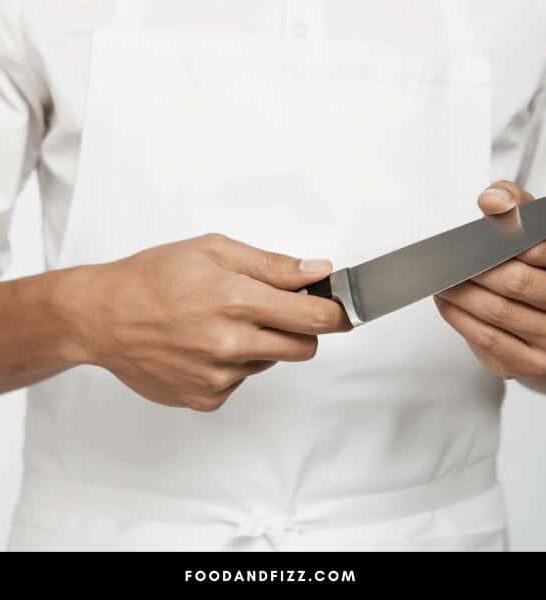It’s unfortunately easy to injure yourself or others with a kitchen knife. In fact, more than 1,000 people visit the emergency room for kitchen knife related injuries every day.
It’s especially important to be careful when you’re using a knife in a crowded kitchen. When there are other people around, you could easily injure someone while carrying the knife around.
How to Carry a Knife In the Kitchen Safely
Try not to carry a knife in a crowded kitchen unless you have to. When you are carrying a knife, it should be pointed downwards so that it’s not pointed towards you or anyone around you. Keep a steady grip on the knife so that you don’t drop it.
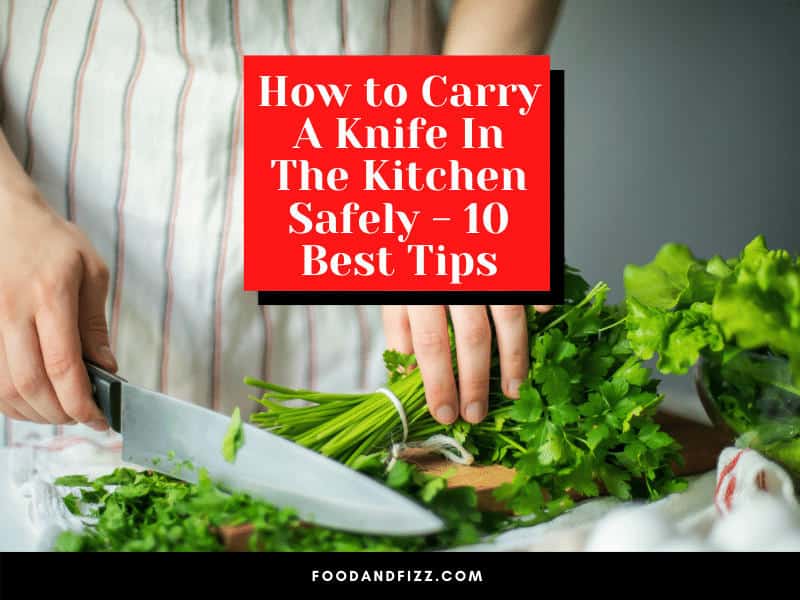
How to Carry a Knife In the Kitchen Safely
These ten tips are some of the most important guidelines for carrying a knife in the kitchen. Accidents happen, but you can dramatically reduce the risk of injury when you use kitchen knifes in the right way.
1. Keep Your Knife Sharp
Sharp knives are actually much safer than dull ones. When someone is cut with a dull knife, it leaves them with a wider wound that takes much longer to heal.
That’s why it’s best to sharpen your kitchen knives on a regular basis. You should aim to sharpen your knives at home after every three to four uses.
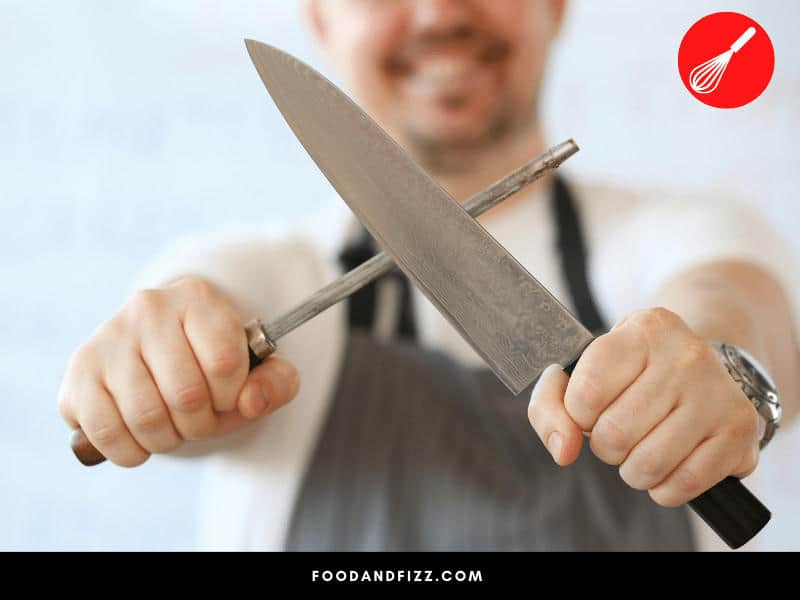
2. Wipe Down the Handle Before Carrying a Knife
In many cases, people carry knives in the kitchen because they’re bringing them to the kitchen sink. While it’s smart to clean your knives immediately after each use, it’s easy to drop a knife if it has a slippery handle.
Before you pick up a kitchen knife, use a paper towel to wipe off its handle. Make sure you have a good grip on the knife before you try to carry it across your kitchen.
3. Point the Blade Downward
If the blade of a knife is pointed towards you or in the direction of anyone around you, just bumping into someone could have disastrous consequences. When you keep the blade pointed downwards, you can avoid injury even if you trip or brush up against someone while you’re carrying the knife.
Try to keep your arm as rigid as possible while the knife is in hand. If your arm is lax, the knife could wind up moving as you carry it, which could point it in the direction of you or someone else.
4. Wear the Right Footwear
It’s common for kitchen knife injuries to occur because someone slipped or tripped while carrying a knife. You can reduce the risk of this happening by wearing shoes with slip-proof soles whenever you’re in the kitchen.
Not only can the right shoes help to keep you from slipping, but they can also protect your feet if you drop the knife that you’re holding. Even if the knife is very sharp, your shoes may be able to shield your foot and keep it safe from the knife.
5. Carry the Knife In Your Dominant Hand
It’s best to hold a knife in your dominant hand when you’re cutting food, and you should follow the same practice when you’re carrying the knife. When you hold something in your dominant hand, you can get a better grip, which means you’ll be less likely to drop the object.
If your dominant hand is carrying something else, you’ll want to set that item down before you try moving the knife. Even though it takes more time, you shouldn’t carry other any other objects along with the knife that you’re holding.
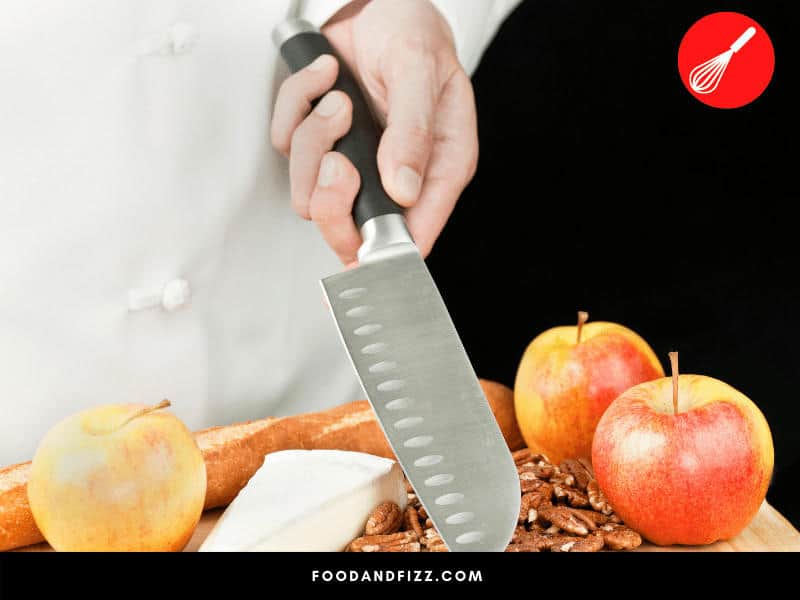
6. Let People Know Where You’re Walking
The risk for knife injuries skyrockets when there are other people in the kitchen with you. That’s why you’ll want to make sure you speak up before you pick up the knife.
Project your voice and state what you’re doing in a clear, easy to understand way. For example, you could say “I’m carrying a kitchen knife from the prep station over to the kitchen sink.”
Describing what you’re doing might seem excessive, but it can make the people around you more aware of the situation. When everyone can hear what you’re doing, they’ll know that they should watch where they’re going.
7. Lay Your Knife On a Flat Surface When Handing it Over
While it’s okay to bring a knife to another person in the kitchen, you should never hand it to them directly. Instead, you should place it on a flat surface that’s near them so that they can pick it up themselves.
It’s easy to unintentionally point a knife towards someone as you hand it to them. Instead of trying to pass a knife along, you should set it down in a safe place to minimize the risk for injury.
8. Don’t Try to Grab a Falling Knife
If you do wind up dropping a knife, you should never try to grab it. When you reach for a knife quickly, there’s a good chance that you’ll grab the blade with your hand, which could result in a nasty injury.
Instead, you should let the knife fall to the ground and carefully pick it up once it stops moving. If there are other people in the kitchen with you, speak up and let them know that you dropped a knife so that they know to steer clear.
9. Avoid Putting Your Knife In the Sink
If you’re carrying your knife over to the sink, you won’t want to just leave it there. Kitchen knives should always be cleaned immediately after each use and then stored in a safe location.
When you leave a knife in the sink, it’s easy for someone else to come into contact with the blade when they’re doing the dishes. If you’re taking a knife to the sink, that knife should be washed, dried, and put away.
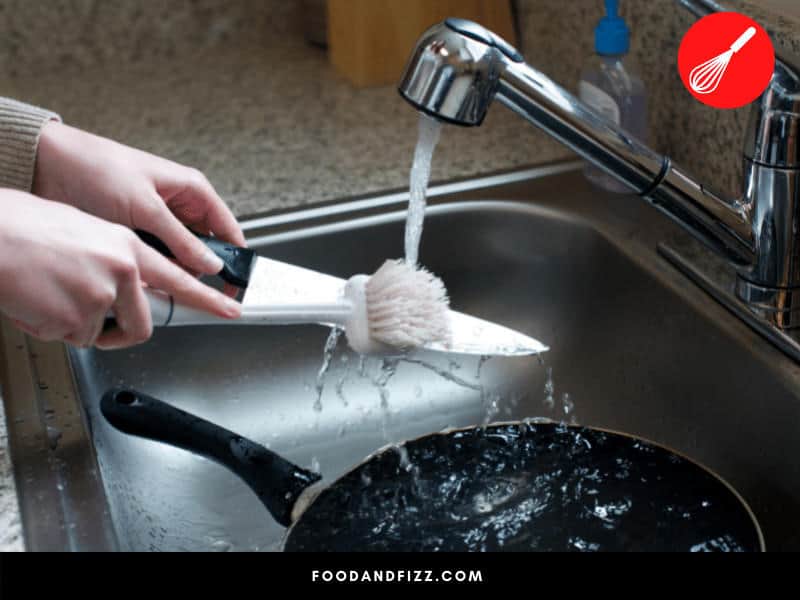
10. Be Extra Cautious Around Children
It’s great to spend time with kids in the kitchen. When children learn how to cook early on, they can develop skills that they’ll continue to use throughout their lives.
However, you’ll need to take extra precautions when you’re cooking around kids, especially when sharp knives are involved. Take the time to teach your children basic knife safety tips so that they won’t make mistakes around knives.
If you’re cooking with younger children, you may want to ask them not to carry knives at all. Instead, ask them to set knives down on a flat surface and call for you when a knife needs to be moved.

Conclusion to How to Carry a Kitchen Knife in the Kitchen – 10 Best Tips
Since kitchen knife injuries are fairly common, it’s best to be as careful as possible when you’re carrying a knife. If you keep these tips in mind and take a few extra precautions, you’ll be able to use your kitchen knife safely.
Frequently Asked Questions on How To Carry a Knife In the Kitchen – 10 Best Tips
How Do You Clean a Kitchen Knife?
Rinse the knife with hot water, and then gently scrub it with a soapy sponge. Once the knife is clean, rinse off the remaining soap with hot water and then carefully dry the knife with a soft cloth or paper towel.
Which Is the Best Knife for the Kitchen?
Different types of knives are well-suited to different tasks. If you’re purchasing a single knife, a chef’s knife will be the most versatile tool.

